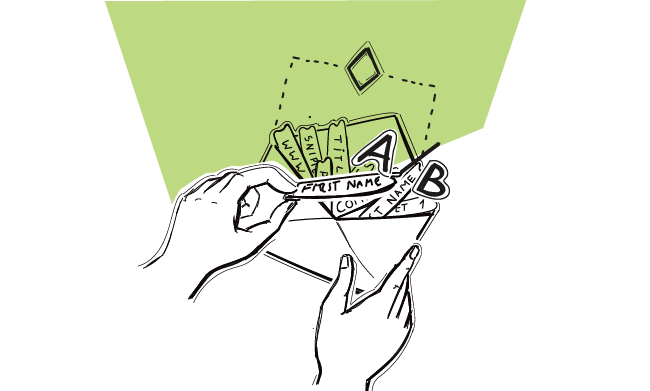How do most cold emails you get usually start? And how many of them did you read from “Hi Joe” till “Best regards”?
Yeah… so you should know by now how NOT to start an email.
What should the cold email introduction include instead to make your addressees keep reading and respond?
Why most cold emails have bad intros?
The start is always the hardest part, at least for me. And if something seems difficult, we usually tend to get over it fast and pass on to the part that feels easier. I think that’s why most cold emails’ introductions suck.
Yes, it’s not easy to come up with a catchy introduction. But a catchy introduction is a crucial part in the body of our email. It is the intro that makes the addressee keep reading or stop right there and delete our message. So we can’t just get over it. We need to make it actually interesting and intriguing.
Who/what do you really want to introduce?
That’s the question to start with. What is the purpose of your email? Is it to introduce you or your company? Or is it to introduce an idea or a solution that your prospect may be genuinely interested in?
Most of the poorly composed cold emails that get into our inboxes start with the wrong idea of introducing the company or the person.
“Hi, my name is so-and-so and I work for such-and-such a company. We are nothing like the other companies. We don’t just do this-and-that but we also do that-and-this, these-and-those, those-and-these and much, much more. We also have great prices. We are masters in our field.” (…)
I’m not making it up, I actually got an email starting with this very template. Here I just cut out the content so we could analyze the form.
Now honestly, would you keep reading such an email? I did. But I did that just because I saw someone tried really hard and despite their efforts, they did such a poor job on the email.
Moreover, I replied to this email. I wanted them to realize that this is NOT what they want to keep sending to people. Here’s just the beginning of my response regarding the introduction, as that’s what we are focusing on.
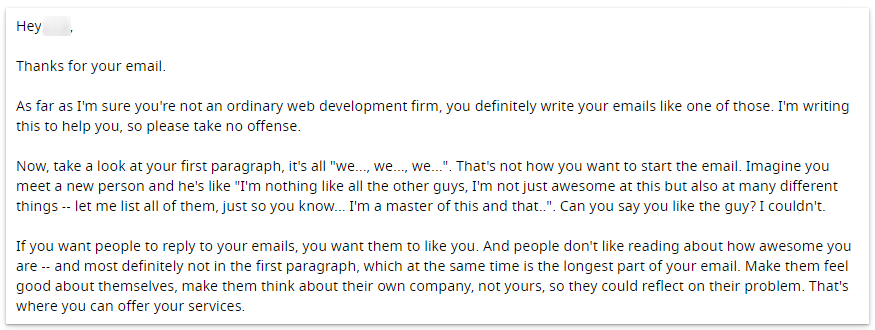
I read it and replied because I’m a person who’s interested in cold emails as a form in general. And I treat this response as my little crusade against poorly composed cold emails. But the email was sent to set me up for a phone call, which, sadly, it would NOT be able to do.
It was a perfect mis-introduction (yes, I know I made up the word). Why? Because it missed the point of the whole email. The purpose was to invite me for a phone chat. The actual effect was that I replied about why they shouldn’t invite me on anything this way.
And it’s just me – most of the other addressees probably just clicked DELETE, even before their eyes reached the third sentence of this email.
How do you start an email to catch your addressees’ eyes?
In order to find out, first, we need to answer a very simple, yet not so obvious, question: How do our cold email addressees feel about us and our company when we first reach out to them?
Sadly, they don’t give a damn. That’s what we all have to realize. They do not care at all, especially because they get dozens of emails every day starting just like the email I mentioned above.
The key to a well-crafted intro is to make it include something that they actually care about because that’s what gets them reading further.
And what do our prospects care about?
#1 – Themselves.
Start an email with a reference to their work and expertise. A website, a blog post, a tweet, anything they wrote or made. Express your appreciation, complement on it in a genuine way. A little flattery is what catches their eye and makes them start to like you. That’s just how we all work.
#2 – Their company.
Refer to their company, or even more specifically, to an issue the company may have that is directly connected with what you’re about to offer. You can use a specific question that will start a kind of dialogue and make them wonder about how they could improve their business with your help. For some great examples of questions in cold email introductions, check the article by Heather Morgan at Salesfolk.
#3 – Their very problems.
Asking about the problems they may face, you make them stop for a while and reflect on the things to change. This may be a great conversation starter as it makes them tell you about the issues they’re struggling with. And in order to notice the value of your solution, they have to realize their pain in the first place.
#4 – The solutions to their very problems.
That’s the art of cold email – to introduce your idea/business/product as a solution to the addressee’s real problems. As soon as they figure out that they really have a problem, they will be ready to hear/read about your solution.
That’s why we never start a cold email talking about ourselves. We create a context for our solution first. We give them a reason to hear us out – to keep reading.
What can you do to write better cold email intros?
Before you sit down to write your own cold email intro, do these 3 things:
- Get to know your prospects. Discover their problems. That will give you some hints on what kind of context you want to create in your intro to draw their attention before you present your solution.
- For a few minutes forget about your great product or service. Even if you have a perfectly-crafted description of your solution, keep it for the next part of your email. In the opening lines, focus on the reasons why your addressees should be interested in it in the first place.
- Think of the intros that made you read an email till the signature and possibly respond. Try to realize what was so great about them.
In case I forgot about something, or I don’t realize that there’s a great trick for cold email introductions that works well for you, please let me know in the comments.
***
Here you have everything about how to start an email.
Go now to Part IV of Six-Step Effective Cold Email Tutorial:
Value Proposition – How to Tell My Addressee What I Want from Them? >>
FAQ
What Makes a Cold Email Subject Line Compelling?
A compelling subject line should be clear, concise, and relevant to the recipient. It must grab the recipient’s attention by addressing a specific pain point, offering a value proposition, or invoking curiosity without making exaggerated promises. Personalizing the subject line, such as including the recipient’s job title or referencing a recent achievement of the prospect’s company, can significantly increase open rates.
How Do I Choose the Right Cold Email Template?
Choosing the right cold email template involves understanding your target audience and the goal of your email campaign. The template should align with your sales process, highlighting your value proposition early on and addressing the prospect’s pain points. It should be flexible enough to be personalized for each recipient, including references to their company, job title, or even comments on their LinkedIn profile.
What Are the Key Components of an Effective Cold Email?
An effective cold email should have a compelling subject line, a personalized opening line that connects with the recipient, a concise body that clearly articulates the value proposition and addresses the recipient’s pain points, and a clear call to action. Including a brief mention of a mutual connection or how you found their profile can also add a layer of personalization and credibility.
How Can I Personalize My Cold Email Outreach?
Personalize your cold email by researching your recipient, such as their role in the company, recent company news, or their LinkedIn profile. Use this information to tailor your opening line and ensure the email speaks directly to their needs or interests. Mentioning a mutual connection or specific details relevant to their business can make the email feel more personal and less like a generic sales pitch.
What Strategies Can I Use to Follow Up After Sending a Cold Email?
Following up is crucial in cold emailing. Wait a few days, then send a follow-up email that reiterates your value proposition and includes a call to action. Keep it brief and to the point. You can also reference something new you’ve learned about their company or industry to show ongoing interest and dedication. Planning a sequence of 2-3 follow-up emails, each offering additional value or insight, can increase your chances of getting a response.
How Do I Write Cold Emails That Get Responses?
To write cold emails that get responses, focus on crafting a message that resonates with the recipient. Start with a strong subject line, personalize the opening line, clearly state your value proposition, and address how you can solve their specific pain points. Keep the email body concise and actionable, and end with a clear, easy-to-follow call to action. Testing different email templates and subject lines can help you refine your approach based on what resonates best with your target audience.
Can Cold Emailing Be as Effective as Cold Calling?
Cold emailing can be as effective as, if not more than, cold calling when done correctly. It allows recipients to engage with your message on their own time and provides them with written information they can refer back to. The key to effective cold emailing is personalization, relevance, and providing clear value. Unlike cold calling, cold emailing also gives you the opportunity to directly link to your website, portfolio, or other online resources.
What Are Some Common Mistakes to Avoid in Cold Email Campaigns?
Common mistakes include sending generic, non-personalized emails, failing to research the recipient, using misleading subject lines, writing lengthy emails that lack a clear value proposition, and not including a specific call to action. Additionally, neglecting to follow up or sending too many follow-up emails can also detrimentally impact the success of your cold email campaign.
How Do I Measure the Success of My Cold Email Campaigns?
Measure the success of your cold email campaigns by tracking key metrics such as open rates, response rates, and conversion rates. Tools that offer analytics for cold email campaigns can provide insights into how recipients interact with your emails, which templates are most effective, and which subject lines capture the most attention. Use this data to continually refine your approach and improve the effectiveness of your cold email strategy.
Are There Any Free Tools to Help Write and Send Cold Emails?
Yes, there are several free tools available that can help with writing and sending cold emails. These tools can assist with email formatting, provide templates, offer subject line suggestions, and even help with tracking opens and responses. While basic features are often free, you may need to consider paid options for more advanced functionalities, such as detailed analytics, automation of follow-up emails, and integration with CRM systems.
READ ALSO
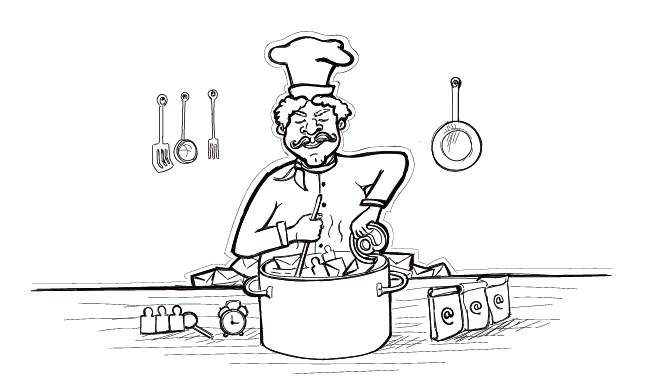
5-Minute Campaign Audit for a Cold Email Newbie
Are you just one click away from sending your first cold email campaign? Then this post is for you. Hold your horses for a moment, and spare a few minutes to do a quick campaign audit before you click the ‘send’ button. Here’s what you should check to make sure your campaign is all set and ready to go.
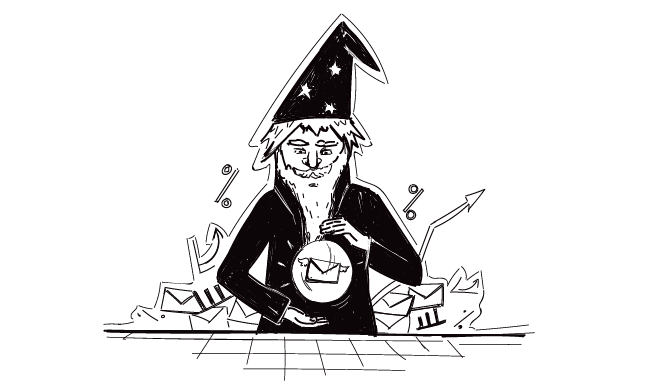
The Better You Know How Email Works, the Higher Your Open Rate
There's a reason why we have 20+ email deliverability articles published on this blog. In order to be a pro at cold emailing and get outstanding results, you need to know how email works. Knowing how email works, however, doesn't mean writing the best email template out there. It goes well beyond email copy. It means knowing how email is sent and using this knowledge to schedule campaigns.
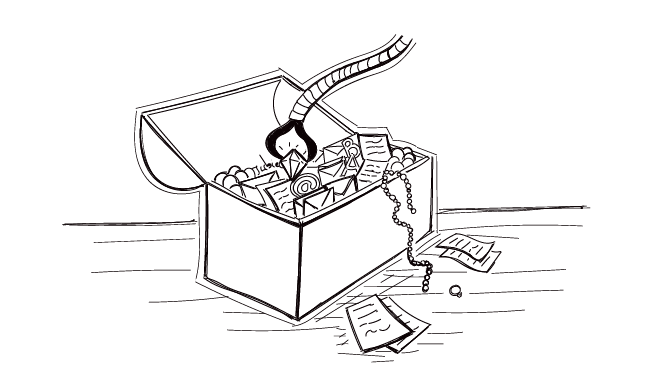
What You Should Definitely Steal From Cold Email Templates
The core purpose of cold emailing is to start a conversation with a prospective customer and build a valuable business relationship off of it. However, to get there you need to catch your prospect’s attention and spark their engagement first. Your cold email copy plays a major role in achieving this goal. Coming up with compelling content is not a piece of cake, though. It takes time, effort and a substantial amount of creativity. Although copying a cold email template you found on Google won't get you any customers, seeing what others have written in their email copy is a source of inspiration. We studied quite a few cold email templates and summed up the most effective formulas you can steal to craft your own email copy.

